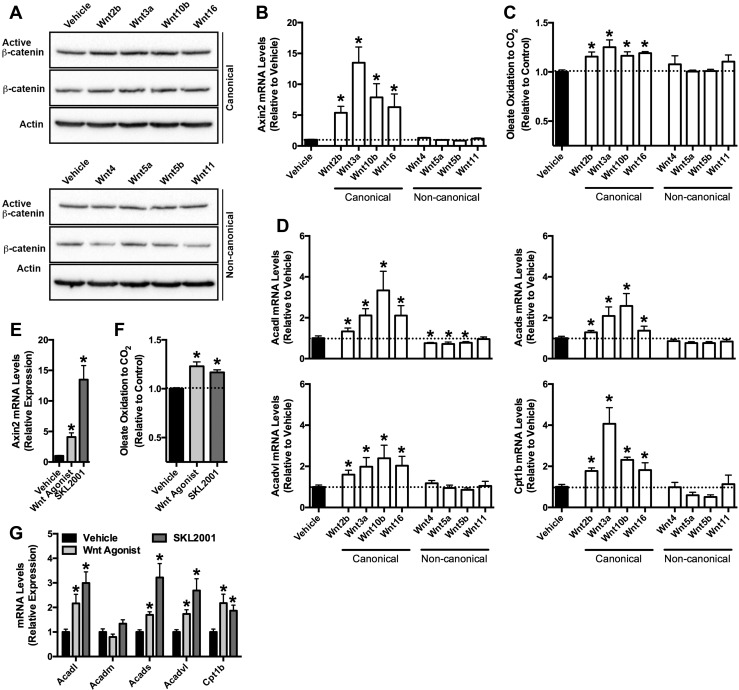Figure 1.
Canonical Wnts and Wnt agonists increase fatty acid oxidation in osteoblasts. (A) Immunoblot analysis of active β-catenin (unphosphorylated on Ser33/Ser37/Thr 41) and total β-catenin levels 18 hours after Wnt ligand (100 ng/mL) stimulation. (B) qPCR of Axin2 mRNA levels in primary osteoblasts stimulated with Wnt ligands for 18 hours. (C) Relative oxidation of 14C-Oleate to 14CO2 by osteoblasts treated with Wnt ligands for 18 hours. Results were normalized to protein concentration and then expressed relative to the untreated control. (D) qPCR analysis of Acadl, Acads, Acadvl, and Cpt1b mRNA levels in osteoblasts treated with Wnt ligands. (E) Axin2 mRNA levels in primary osteoblasts treated with Wnt agonist [2-amino-4-(3,4-(methylenedioxy)benzylamino)-6-(3-methoxyphenyl)pyrimidine, 10 μM] or SKL2001 (10 μM) for 18 hours. (F) Relative oxidation of 14C-Oleate to 14CO2 by osteoblasts treated with Wnt agonist or SKL2001. (G) qPCR analysis of genes involved in fatty acid catabolism in osteoblasts treated with Wnt agonist or SKL2001. All in vitro data were replicated in two independent studies. Data are expressed as mean ± standard error of the mean. *P < 0.05.

